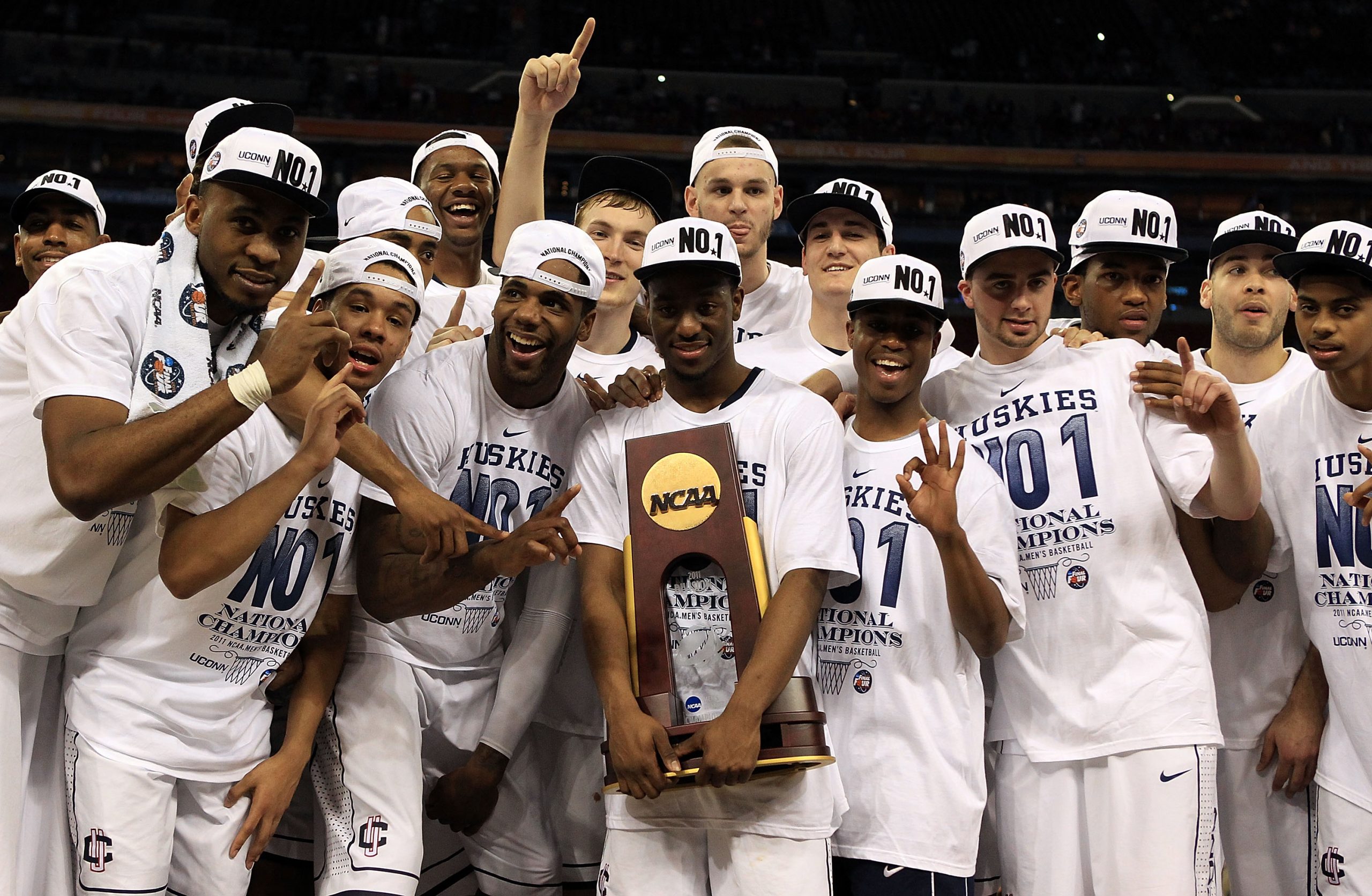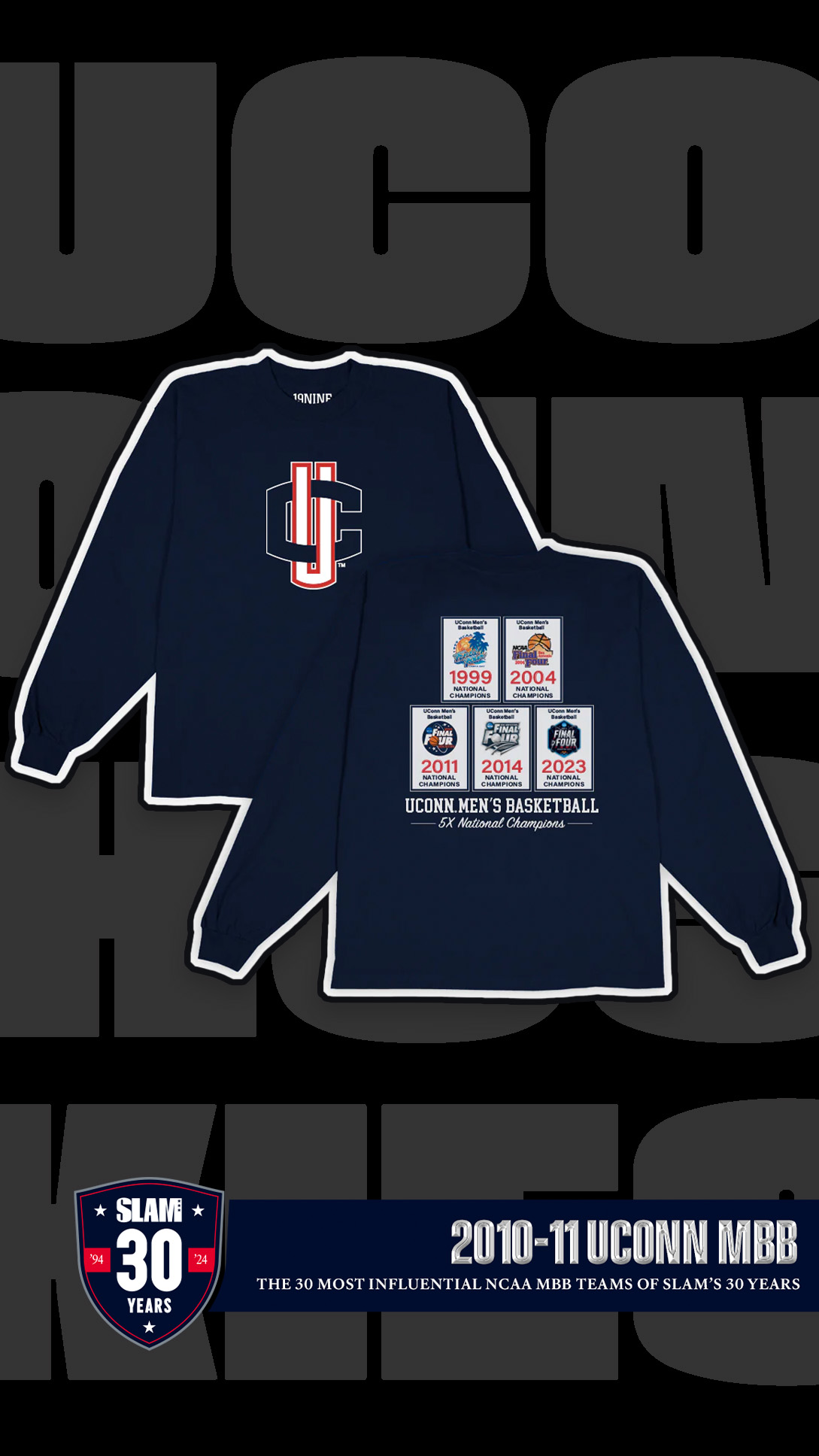To celebrate SLAM’s 30th anniversary, we’re spotlighting the 30 most influential men’s college teams from our past 30 years. Stats, records and chips aren’t the main factor here, it’s all about their contribution to the game’s cultural fabric.
For the next 30 days—Monday through Friday— we’ll be unveiling the full list here. We’ve also got an exclusive retro collegiate collection, out now, that pays homage to each squad’s threads. Shop here.
Headed into the 2011 season, UConn was unranked on every preseason poll and picked to finish 10th in the Big East. They had just come off a mediocre season in which they failed to make the NCAA tournament for the second time in four years. So people had already written them off as a threat in the Big East, let alone as a national title contender.
In other words, a whole lot of fuel was being added to the fire already brewing in these Huskies—a Huskies squad led by a 6-foot, 172-pound star point guard from the Bronx.
All eyes pointed to Kemba Walker, who returned for the 2011 season, a junior with lofty expectations. He’d already become a fan-favorite proven to score in bunches, always in a fresh pair of retro Js, but could he impact winning at a high level? Could you count on him to lead UConn back to glory?
Don’t get it twisted, though; Kemba had a well-composed squad around him. Among them were two star-studded freshmen–point guard Shabazz Napier and swingman Jeremy Lamb–who would each become first-round NBA Draft selections themselves. But was it enough? Would their lack of experience be a hindrance? UConn was very talented, but how consistent could they be?
A lot of questions, but UConn had the cheat sheet.
They made it through their non-conference schedule undefeated, winning ten straight before getting into Big East play, including wins over No. 2 Michigan State and No. 8 Kentucky. During that stint, UConn ranked as high as No. 4 on the AP poll and seemed primed to make a run at the Big East crown.
Anyone who knows anything about college hoops of the 2000s and 2010s knows every Big East matchup was a dogfight. On any given night, UConn could convincingly beat a top-10 team like Georgetown or lose by 15 to an unranked St. Johns. It was that type of up-and-down conference slate for them. They finished a disappointing ninth in the Big East and headed into the Big East Tournament, losing four of its last five games.
Well, the way March Madness is set up, the Huskies were in perfect position to take the country by storm.

They breezed through their first two games of the Big East Tournament, earning a spot in the quarterfinals–a rematch against Pittsburgh (the Big East regular season champs who blew them out back in December). This time around, in March, the stakes were different.
The game was tied at 74. Seven seconds left on the clock. UConn’s ball.
Everyone in their right mind knew who was taking the last shot. It didn’t matter. With a mismatch at the top of the key Kemba hit a smooth right-to-left hesi, took a hard attack-dribble left, stopped on a dime, stepped back and raised up for his picture-perfect jumper as the helpless defender stumbled to the ground. The ball splashed through the net, Madison Square Garden erupted and a college basketball legend was born.
“It was a special moment in UConn history; I turned to my assistants as we were walking off the court and said, ‘We got something special going on,’” Jim Calhoun, UConn’s retired hall-of-fame head coach, recalled in a 2016 interview.
Coach Calhoun couldn’t have been more right. Kemba and the Huskies sealed the deal two days later and won the Big East Tournament. That’s five days, five games and five wins. A truly unprecedented run. But next up was the NCAA Tournament. They’d have to win six more games in a row to be the last team cutting the nets. Surely, they couldn’t continue playing with the same level of intensity after having just survived that Big East gauntlet, right?
Uh-uh, wrong.
Kemba played like a man possessed; the team went as he went. He averaged 23.5 points, 6 rebounds and 5.6 assists in the NCAA Tournament en route to leading the program to their third national championship in a win over Butler–defeating future hall of famers like Kawhi Leonard and bluebloods like Kentucky (for a second time) along the way.

The 2011 UConn team epitomizes everything we love about college basketball–the swagger, the culture, the underdog story, the journey. From unranked to on top of the ladder, the 2011 UConn Huskies are forever immortalized in basketball history.

Photos via Getty Images.














